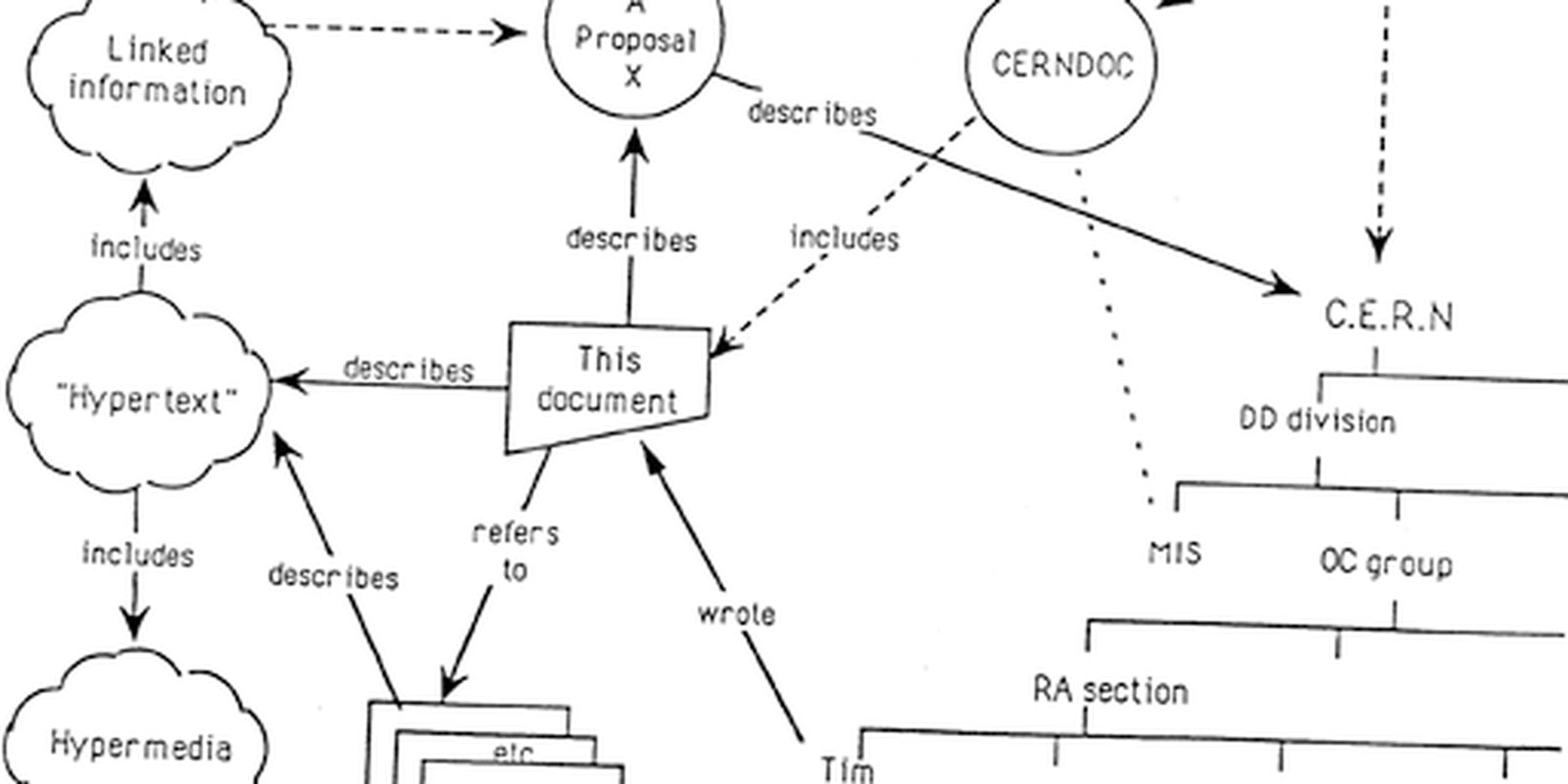The European Organization for Nuclear Research, known by its French acronym, CERN, has always concerned itself with the origin of things: It is there, on the Franco-Swiss border, that scientists from around the world smash particles together at near-light speed with the hopes of reproducing the first moments of the universe. And it is there too that researchers are searching for the first draft of the first site published on the World Wide Web.
In a story for the Associated Press, journalist Jeffrey Collins follows project lead Dan Noyes as he tries to locate the original hypertext file created in 1990 by the Web’s inventor, a CERN physicist named Tim Berners-Lee who conceived of the Web as a way to manage the massive amounts of data produced by CERN’s accelerator experiments. In a 1989 proposal, he offered it as a “solution based on hypertext systems” to the “problems of lost information [in] complex evolving systems.”
That the World Wide Web was ever considered a way to manage “complex evolving systems” is, in retrospect, as good a testament as any to how long ago 1989 was. (When Berners-Lee wrote his proposal, Debbie Gibson topped the pop charts and the series premiere of Saved by the Bell was still months away.) Aesthetically, the first website was somewhere between a .txt file and an early Geocities page. Though its look hasn’t much changed, over the past two decades it’s been updated an unknown number of times. “It’s not like a book,” Noyes told Collins. “A book exists through time. Data gets overwritten and looped around.”
The researchers’ goal is to find a copy of the original hypertext file, before any revisions were made. The earliest known iteration is thought to be inside a Jobs-era NeXT computer owned by a University of North Carolina professor named Paul Jones. According to Collins, back in 1991, Berners-Lee shared with Jones a copy of the hypertext file, then only a year old. But researchers have yet to confirm the file’s existence; they are still trying to extract it from the password-protected computer.
The story of CERN’s attempts to restore the first website reads like a parable for the data age. On the one hand, we can still visit the original website. It’s still functional, maybe even insightful in its old age: “Everything there is online about W3 is linked directly or indirectly to this document,” the homepage reads. But much of the information on the site has been altered, time and again, for more than 20 years. The first hypertext draft might be on a yellowing NeXT computer at the bottom of a landfill. There’s no way of knowing where the Web begins.
“To some extent, it is futile,” Noyes said. But the CERN researchers persist, sifting through endless, evolving data sets in search of a beginning. Because that is what CERN does: “No matter how perfectly you can reproduce something, like The Scream or the Mona Lisa, we have a fetish for the original,” Jones told Collins. “The more you see the derivative, the more you want to see the original.”
Photo by Tim Berners-Lee/CERN


